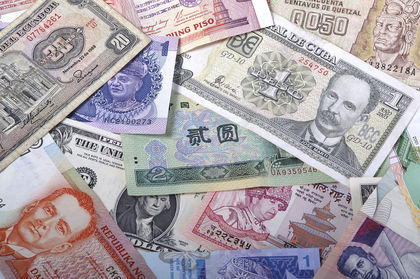Ecuador - Money

Until recently, Ecuador struggled with the persistent devaluation of its currency (the sucre) on the world market, making it harder for Ecuadorians to afford goods produced in other countries. After a decade of steady depreciation, the value of the sucre plummeted in 1999, prompting then-President Jamil Mahuad to announce the national policy of dollarization in January 2000. In September 2000, the country completed its dollarization process, stopping the printing of sucres and introducing the U.S. dollar as the official monetary unit for all banking and government transactions. Ecuador's problem with currency devaluation has since ceased, but inflation has continued to plague the economy, making basic goods unaffordable for many Ecuadorians.
Dollarization brought many changes to the banking sector. Although the Central Bank of Ecuador used to be
| Exchange rates: Ecuador sucres (S/) per US$1 | |
| Jan 2001 | 25,000 |
| 2000 | 24,988.4 |
| 1999 | 11,786.8 |
| 1998 | 5,446.6 |
| 1997 | 3,988.3 |
| 1996 | 3,189.5 |
| Note: On January 7, 2000, the government passed a decree "dollarizing" the economy; on March 13, 2000, the National Congress approved a new exchange system whereby the US dollar is adopted as the main legal tender in Ecuador for all purposes; on March 20, 2000, the Central Bank of Ecuador started to exchange sucres for US dollars at a fixed rate of 25,000 sucres per US dollar; since April 30, 2000, all transactions are denominated in US dollars. | |
| SOURCE: CIA World Factbook 2001 [ONLINE]. | |
responsible for setting domestic interest rates and printing money, those responsibilities now rest with the United States Federal Reserve, which sells dollars to Ecuador and decides whether to raise or lower interest rates. Many banks in Ecuador went bankrupt because of the 1999 financial crisis. The government is working to revitalize its banks and pay back investors who lost money because of bank closures. Since adopting the dollar, Ecuador's banks have grown stronger attracting more investors. Interest rates are much lower than they were before dollarization, marking an improvement in investors' perception of the Ecuadorian economy. The GDP grew 2 percent in 2000, a modest but important sign of progress after a decline of 7 percent in 1999. It is too early to deliver a final verdict on the merits of dollarization, but these figures indicate that Ecuador's adoption of the U.S. dollar might well have paved the way for more sustainable economic development.
Comment about this article, ask questions, or add new information about this topic: